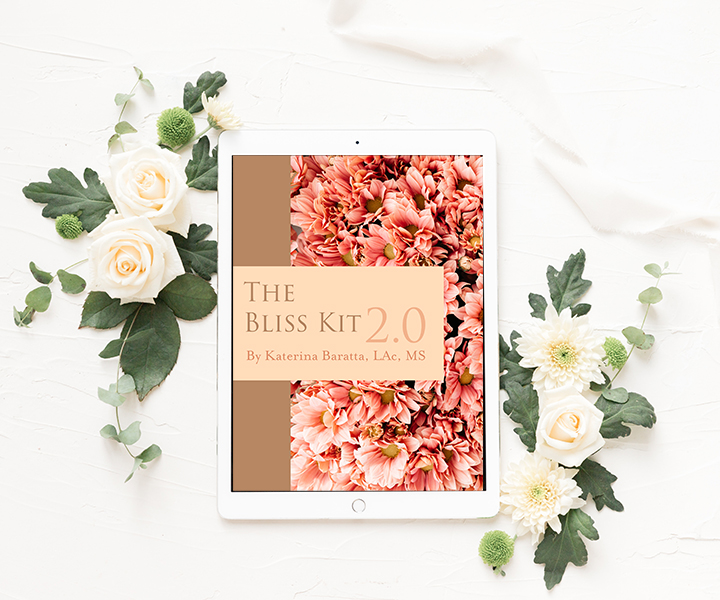5 Winter Wellness Tips from Traditional Natural Medicine
In Chinese medicine, winter solstice marks the most yin moment of the year. Energy has been moving in and down all autumn and it reaches the lowest point as the cold sets in.
The leaves have fallen off the trees and nature looks as though it’s fast asleep.
But even amidst the winter stillness, energy beneath the surface—in the roots of trees as well as the cores of our bodies—begins to collect and gain the strength it will need to push back up again in springtime.
The task in winter, therefore, is to adjust our diet and lifestyle to both counteract the elements outside, as well as build up our inner reserves.
Just as a seed gathers energy from the earth before it sprouts, living moderately in the winter gives us the pushing power we’re going to want when the ice starts to thaw.
In Ayurvedic medicine, winter is considered to be Kapha season, with Vata as a secondary influence.
(Kapha and Vata are doshas, a.k.a. patterns of strengths and weaknesses that—along with a third pattern, called Pitta—describe all manifest phenomena in the human body and world at large.)
Kapha is dominated by the elements of Earth and Water, whose qualities are cold, damp, and heaviness.
Just like winter itself, people with Kapha dominance in their constitution can be described as slow and steady. They tend to be loving, caring, compassionate, and calm. They may take longer to learn, but once they know something they know it forever.
When out of balance, Kapha can become too isolated, withdrawn, sedentary, sluggish, and experience heaviness in mind and body.
Even if Kapha and Vata aren’t dominant in your constitution, these imbalances can show up for any of us in the wintertime.
Vata is the second dosha that dominates in winter, especially in colder, drier climates.
Vata corresponds to the elements of Air and Ether, leading to cool, dry, rough, and mobile qualities.
In excess, Vata can lead to dry skin, lips, hair and nails, insomnia, cold hands and feet, restlessness and anxiety.
Without proper precautions, you can easily experience Kapha or Vata imbalance when the weather is cold.
For winter wellness, the balancing qualities that you want to emphasize in your diet and lifestyle are:
- Warming
- Lubricating (less in damp climates)
- Grounding
- Softening
How?
These 5 winter wellness tips can help:
1. Keep yourself grounded by slowing down.
Avoid rushing, and take time to focus inward. Make sure you balance socialization with quiet time.
Winter’s energy moves slow, and you can easily feel depleted if you try to do too much.
It’s great to counteract the sluggish energy with social activities that excite you and bring you joy, but make sure you also regularly block off your calendar for quieter activities and restorative self-care like acupuncture and bodywork sessions.
Click here to learn more about getting treatments from Katerina.
Winter also isn’t the time to skimp on sleep. With the sun still setting earlier in the day and rising later, natural medicine traditions encourage us to also get to bed earlier and wake later in the darker months, if possible.
2. Bundle up and stay warm, yes. But for optimum winter wellness, make sure you still get outside every day, especially in the morning before 9 a.m.
For most of human history, people spent their lives synced to nature’s rhythms, and our physiology evolved accordingly. Now that we have microscopes and blood tests at our disposal, it has become clear that the chemicals in our bodies are directly impacted by our exposure to sunlight and fresh air. (1, 2)
Getting outside before 9 a.m., in particular, stimulates healthy hormone flow so you feel more energized and uplifted throughout the day, and are able to fall asleep easily when you need to.
A brisk 30 walk in the morning can do wonders for you health and wellbeing, but even just 10 minutes outside can have a positive impact, so if that’s all you can do, that’s just fine.
3, Don’t be too rigid. Adjust your exercise routine to complement your needs.
Figuring out the exercise that is best for you in the winter is really an inside job. There’s no such thing as one-size-fits-all, and your own needs might change from week to week depending on what’s going on around you.
When you’re feeling overstimulated, overwhelmed, and overextended, pushing yourself to the brink at Crossfit might not be the best option to soothe your nervous system in the winter. Instead, choose mellow exercises like walking, qigong and gentle yoga.
If, on the other hand, you feel heavy, sluggish, restless, or are dealing with a lack of motivation, see how you feel when you push yourself to do more vigorous workouts like jogging, dancing, kickboxing, or skiing/snowboarding.
Whatever way you choose to move your body, 6-10 am and pm are optimal for winter exercise. But if you can’t get your movement in between those hours, the best time to exercise is whenever you’re able to exercise.
4. Balance the elements with your diet.
In winter, you’ll notice that you feel your best when you emphasize warm, protein-heavy and moisture-rich foods like soups and stews.
The flavors to favor include naturally sweet, sour, and salty foods, like root vegetables, squash, nuts, seeds, heavy fruits, and whole grains.
Add in proteins like lentils, small beans, tofu, eggs, and occasional meats (if you eat them) and you will feel nourished and grounded, especially when you add warming herbs and spices like cinnamon, ginger, cumin, and black pepper.
Related: 9 Ways to improve gut health
5. Avoid cold, dry, erratic, and hard qualities your diet and lifestyle.
And finally, one of the best ways to feel your best in winter is to avoid the qualities that can bring you off balance.
Cold weather is not the time to indulge in cold and raw foods or drinks like salads and smoothies, which can tip you over the edge and affect your digestion and wellbeing if you don’t counterbalance them with substantial warmth.
Dry foods like chips and crackers, as well as drying grains like millet, rye, and barley, are also best avoided until the weather is more damp.
Enjoy regular warm baths—or even saunas if you can—keep your head and neck warm and protected from cold winter winds, and be careful not to overexert yourself with an overbooked schedule or lofty goals.
Save those for springtime when nature’s expansive energy is out to support you.
Want more than just winter wellness?
Sign up for the newsletter to get regular holistic health and wellness strategy, insight, and inspiration in your inbox.
And if you learned something new, click one of the icons on the left to share this article with your friends and family.
I can’t wait to see where it takes you!





